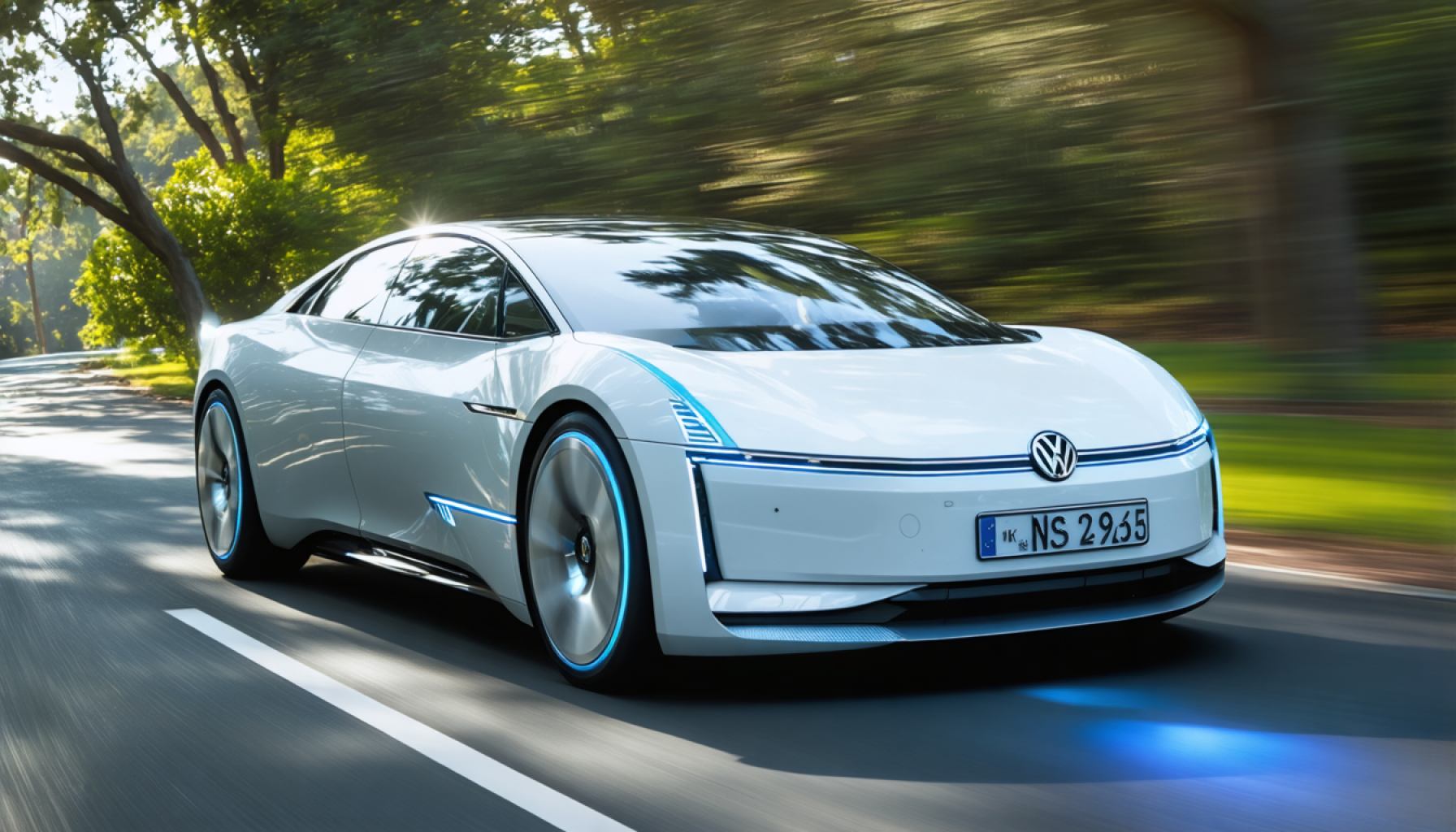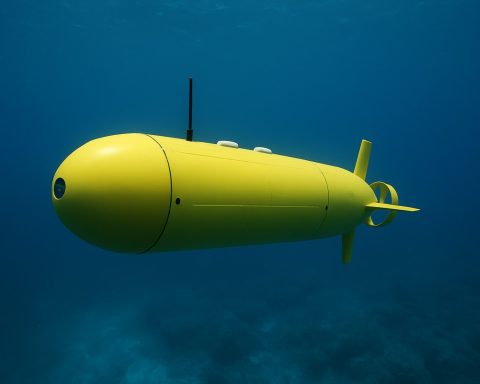- Volkswagen Australia remains optimistic despite a recent dip in electric vehicle (EV) registrations, viewing it as a natural phase in a developing market.
- The launch of the all-electric ID.4 and ID.5 models highlights Volkswagen’s strategic commitment to the future of EVs in Australia.
- External factors like the New Vehicle Emissions Standards (NVES) support the shift toward greener transportation options.
- Volkswagen anticipates fluctuations in early EV adoption as part of the typical technology adoption cycle, which often stabilizes over time.
- The delay in launching the ID.4 and ID.5 was strategic, allowing Volkswagen to incorporate cutting-edge technology suited for Australia.
- Volkswagen’s approach emphasizes customer choice and the transition to sustainability as a central focus.
- Volkswagen Australia remains committed to shaping a legacy in electrification, embracing the journey toward a sustainable and innovative driving future.
The shimmering sun-kissed roads of Australia might seem less welcoming to electric vehicles (EVs) lately, with a dip in registrations causing ripples of concern. Yet, Volkswagen Australia stands firm amidst this turbulence, seeing the downturn not as a setback but as a part of the natural ebb and flow of a nascent market. The German automotive giant, poised with optimism, is steering confidently into the Australian EV future.
As Volkswagen unveiled its all-electric ID.4 and ID.5 models, excitement mingled with assurances came from Piergiorgio Minto, the passenger vehicle director for Volkswagen Group Australia. The recent decline in EV registrations? Simply a small pothole in a vast highway destined for growth. While some segments of the market, like the medium SUVs, momentarily sputtered, other sectors continue to rev their engines, pushing the overall market upwards.
Volkswagen’s belief in a prosperous electric future isn’t without merit. Robust external factors, such as the New Vehicle Emissions Standards (NVES), are nudging manufacturers toward greener lanes. The policymaking wind is blowing favorably, and Volkswagen is set to catch this breeze with sails full. Although the early rush of adopters might have cooled, a broader demographic is taking notice, ready to make the switch in the coming years.
The narrative of fluctuations as temporary has a historical precedent. New technologies often experience a burst of early sales followed by irregular spurts before settling into a steady rhythm. It’s a dance Volkswagen is familiar with and prepared for. Daniel DeGasperi, the communications manager, describes this as a familiar spike, an energetic leap before widespread acceptance stabilizes the market.
The unveiling of the ID.4 and ID.5 marks a strategic delay, not a missed opportunity, even amidst a competitive environment crowded with rivals ahead in the timeline. This calculated postponement allowed Volkswagen to harness the latest technological advancements, tailoring a perfect product suited for the Australian landscape. An upgraded power and performance package encapsulates what the brand describes as “the Vee-Dub way.”
But what stands behind Volkswagen’s foresight is not merely an eye on electrification but a commitment to choice. As the world accelerates towards sustainability, Volkswagen ensures its customers are in the driver’s seat, ready to choose amidst a diverse lineup. All roads lead to an electric future, but for now, the journey is paved with variety.
Underneath the statistics and models lies a simple truth: the world is changing, and with it, the way we drive. Volkswagen Australia epitomizes this shift, embracing the bumps and curves not as roadblocks but as mere milestones on the route to an electrified tomorrow. Their resolve showcases the belief that this journey is not just about numbers but about crafting a legacy for future generations behind every steering wheel, remarkably electric.
With this unwavering vision, Volkswagen invites Australians to ride along, promising that the future of driving holds more than just horsepower; it promises sustainability, innovation, and endless possibilities.
Why Volkswagen’s Strategy is Key for Australia’s Electric Vehicle Future
The Resilient Rise of Electric Vehicles in Australia
The Australian automotive market is buzzing with the potential shift towards electric vehicles (EVs). Although there’s been a recent dip in EV registrations in Australia, industry leaders like Volkswagen Australia are viewing this not as a setback but a stepping stone towards a greener future. As detailed by the Australian Financial Review, economic trends in technology adoption often show cyclical patterns—the initial surge in interest, followed by a lull, and then a steady climb towards normalization. This is a vital aspect of market dynamics that Volkswagen is keenly navigating.
Volkswagen’s Strategic Positioning: The ID.4 and ID.5
Volkswagen’s introduction of the ID.4 and ID.5 is a calculated venture into the Australian EV market. Rather than rushing to release their products amid the initial frenzy, Volkswagen opted for a strategic delay. This decision allowed them to enhance their models with cutting-edge technology, ensuring robust performance and appeal tailored to Australian conditions. These models epitomize Volkswagen’s commitment to sustainability and innovation while providing consumers with varied choices in their transition to electric cars.
External Factors Boosting EV Adoption
1. New Vehicle Emissions Standards: The implementation of stringent emissions standards in Australia plays a critical role in accelerating the adoption of EVs. These regulations pressure car manufacturers to pivot towards greener vehicle options, providing a favorable market environment for electric vehicles.
2. Government Incentives: Various government initiatives and subsidies are increasingly supporting the purchase of EVs, making them more accessible to a broader demographic.
3. Infrastructure Development: There is a growing investment in electric charging infrastructure, making it more convenient for drivers to transition from internal combustion engines to electric vehicles.
Market Forecast & Industry Trends
The penetration of EVs in Australia is projected to rise sharply over the next decade. According to a report from McKinsey, the global EV market could represent 45% of the total vehicle market by 2030. With appropriate strategies and infrastructure in place, Australia could align closely with these global trends.
Controversies & Challenges
Despite the optimism, challenges such as the availability of charging stations in rural areas, battery recycling, and public skepticism about range anxiety remain pertinent issues. Danny DeGasperi, communications manager at Volkswagen, alluded to these concerns, emphasizing they are natural hurdles in the path toward mass adoption.
Real-World Use Cases
Consider the average Australian family’s daily routine: typically short-distance commutes for work and school. The range offered by modern EVs like the ID.4 and ID.5 more than suffices for these needs, validating their practicality beyond mere novelty.
Pros & Cons Overview
Pros:
– Sustainable and environmentally friendly.
– Lower operational and maintenance costs compared to conventional vehicles.
– Instant torque leads to a smoother, faster driving experience.
Cons:
– Limited charging infrastructure in certain regions.
– Higher upfront cost.
– Range limitations in entry-level models.
Actionable Recommendations
For Australians considering the leap to electric driving:
– Leverage Incentives: Take advantage of government incentives that can significantly reduce the purchase cost of EVs.
– Explore Hybrids: For those apprehensive about range, hybrid models can bridge the gap.
– Monitor Infrastructure Development: Stay informed on the expansion of charging networks to make better-informed decisions.
Conclusion
Volkswagen’s optimistic stance on the enthusiasm for EVs in Australia exemplifies their long-term vision of transforming the automotive industry towards sustainability. With the right mix of innovation, strategic choices, and policy support, Volkswagen is set to accelerate the electric vehicle revolution. For more insights and updates on Volkswagen’s journey in the EV market, visit the Volkswagen official website.









